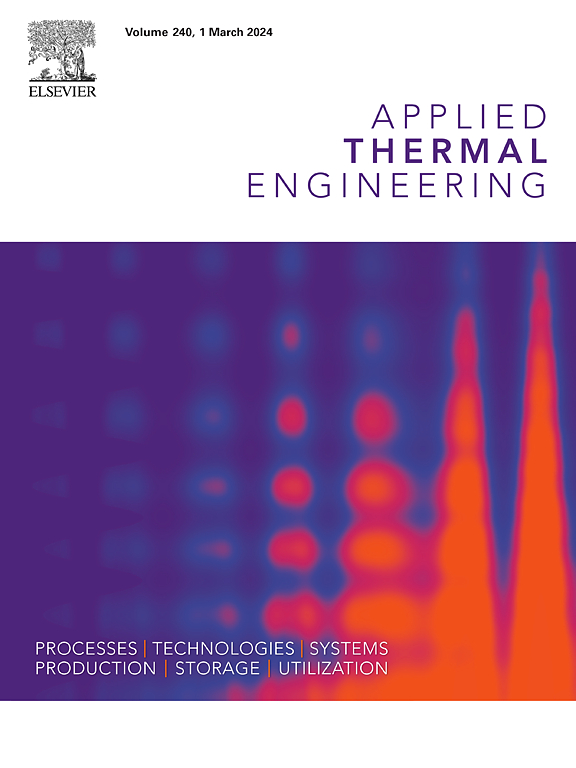Development of membrane distillation powered by engine exhaust for water desalination
IF 6.1
2区 工程技术
Q2 ENERGY & FUELS
引用次数: 0
Abstract
To address water shortage in arid areas and make use of waste heat, an experimental investigation is presented for a novel system of air gap membrane distillation unit driven by an engine exhaust heat source for the development of an on-board car water desalination. The design of the gas-to-water heat exchanger is presented and optimized. The system’s performance, governed by the achieved feed water temperature and measured by the output vapor mass flux, is evaluated with time under varying operational parameters, including engine load, engine speed, and feed water flow rate, with the analysis of production cost for economic viability. Experimental results revealed that higher engine loads and speeds lead to rapid temperature increase of the feed water, enhancing the efficiency of the membrane distillation process and increasing the permeate flux. Notably, a maximum permeate flux of 45 kg/m2h was achieved after 40 minutes of operation. A minimum production cost of 3.2 $/m3 is estimated at an engine load of 35 N.m. With production costs ranging from 3.2 to 5.8 $/m3, the proposed system emerges as a highly competitive option when compared with other membrane distillation systems driven by waste heat in literature. This study underscores the potential of utilizing waste heat from car engines for cost-effective and sustainable water desalination, paving the way for further development and implementation of the system as a mobile desalination unit for different applications.
开发利用发动机废气驱动的膜蒸馏海水淡化技术
为解决干旱地区缺水问题并利用余热,本文介绍了一种新型气隙膜蒸馏装置系统的实验研究,该系统由发动机尾气热源驱动,用于开发车载海水淡化装置。文中介绍并优化了气水热交换器的设计。在发动机负荷、发动机转速和进水流量等运行参数不断变化的情况下,对系统的性能进行了评估,评估结果受进水温度的影响,并以输出蒸汽质量通量来衡量,同时对生产成本进行了分析,以确定其经济可行性。实验结果表明,较高的发动机负荷和转速会导致进水温度迅速升高,从而提高膜蒸馏过程的效率并增加渗透通量。值得注意的是,运行 40 分钟后,最大渗透通量达到 45 公斤/平方米小时。在发动机负荷为 35 N.m 时,估计最低生产成本为 3.2 美元/立方米。由于生产成本在 3.2 至 5.8 美元/立方米之间,与文献中其他由余热驱动的膜蒸馏系统相比,拟议的系统具有很强的竞争力。这项研究强调了利用汽车发动机余热进行经济有效和可持续的海水淡化的潜力,为进一步开发和实施该系统作为不同应用的移动海水淡化装置铺平了道路。
本文章由计算机程序翻译,如有差异,请以英文原文为准。
求助全文
约1分钟内获得全文
求助全文
来源期刊

Applied Thermal Engineering
工程技术-工程:机械
CiteScore
11.30
自引率
15.60%
发文量
1474
审稿时长
57 days
期刊介绍:
Applied Thermal Engineering disseminates novel research related to the design, development and demonstration of components, devices, equipment, technologies and systems involving thermal processes for the production, storage, utilization and conservation of energy, with a focus on engineering application.
The journal publishes high-quality and high-impact Original Research Articles, Review Articles, Short Communications and Letters to the Editor on cutting-edge innovations in research, and recent advances or issues of interest to the thermal engineering community.
 求助内容:
求助内容: 应助结果提醒方式:
应助结果提醒方式:


